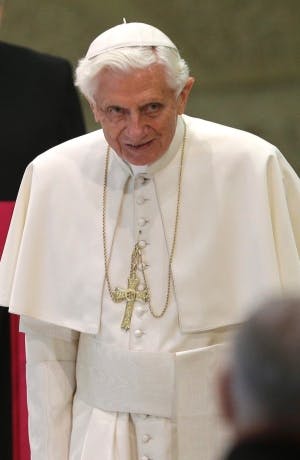The Catholic Church is many things, and regardless of your view of the institution, you have to acknowledge the impact of choosing the next pope to replace the retiring Benedict XVI.
The impact of selecting a leader for 2 billion people and a sovereign state, not to mention the infallibility thing, is massive. It’s not just a matter of deciding if he can pull of the hat and scepter look.
The succession planning process for choosing the next pope has been largely in place since 1274, and is the papal conclave is the oldest ongoing method for choosing a leader of an institution. So surely there are lessons to be had from a system that has worked for over 7 centuries.
1. Don’t over-do the process
The College of Cardinals convenes and is in seclusion until a pope is chosen by super-majority vote. Historically, if it was taking too long, all but bread and water would be withheld, and the roof would be removed just to give a little nudge.
It’s not about over-wrought processes, it’s about the discussion: the right people in a room, hashing it out.
2. Go “Old School”
Just as the key to success isn’t in the process, it’s not in slick tools either. The Cardinals use paper ballots and smoke to keep track.
Many organizations pin their hopes (and budgets) on tools or templates, only to be disappointed that their investment doesn’t bear fruit. Commitment to bringing the right people together on a regular basis for a productive discussion is critical. How you manage that is less so.
3. Look ahead, as well as back
Before entering the conclave and sealing the doors of the Sistine Chapel, the Cardinals listen to two (2) sermons about the state of the Church the qualities needed in the next leader to see what is coming at them, and how to meet those challenges.
Organizations tend to start a succession planning discussion with data about historical performance in current roles without considering how the organization will grow and change over time, what new challenges they will face, and what new roles or skills will be required to do so.
Instead of starting with the history, start with the future in mind and how to close the gap.
4. Emerge with a plan once the (white) smoke clears
If the pope-elect is not already a bishop, he needs to go through some steps to be consecrated as one. Deciding on the name that goes in the box is a first step, but don’t leave it there. Ensure that person gets the appropriate development and experiences necessary to step into the role when the time comes.
Granted, choosing the next Head of Compliance might feel a little less weighty than selecting the leader of 28 percent of the world’s population, but the path is the same, and I dare say, has stood the test of time.
Want more tips on developing a succession plan that really works? Check out this webinar by my colleagues Kristi and Patti.
This was originally published on PeopleResult’s Current blog.
